
Roots
Consider the quiet hum of history, a resonance carried not only in ancient scrolls or grand monuments, but in the very contours of human adornment. From the earliest whispers of communal life, hair has served as a canvas, a testament to identity, status, and spirit. Across the vast, diverse expanse of African cultures, hair coverings have long held a place of profound significance, stretching far beyond mere aesthetics or protection from the elements.
They represent a language spoken through fabric and adornment, a dialogue between the individual and their world, deeply rooted in ancestral wisdom and the rhythmic pulse of daily existence. These coverings tell stories of belonging, of transition, of the sacred and the everyday, shaping visual narratives that transcend generations.
The origins of head coverings across the African continent stretch back to antiquity, predating written records in many societies. Archaeological findings, ancient artworks, and oral traditions hint at practices that are as old as human civilization itself. These early forms were likely born from a blend of practical needs—shielding from sun, dust, or cold—and a burgeoning sense of symbolic expression.
As communities grew and diversified, so too did the complexity and meaning attributed to these coverings. What began as simple wraps evolved into elaborate constructions, each fold, knot, and choice of material carrying layers of cultural meaning.
Hair coverings in African cultures speak a visual language of identity, status, and spiritual connection, their roots reaching into ancient communal life.
One cannot separate the history of hair coverings from the history of hair itself within African contexts. Hair, in many African belief systems, is considered a conduit to the divine, a spiritual antenna connecting the wearer to higher realms and ancestral spirits. Its placement at the highest point of the body gives it a particular sanctity.
Covering the hair, then, became a way to protect this sacred connection, to honor spiritual purity, or to signify a readiness for spiritual work. The materials chosen often carried their own spiritual weight—natural fibers, shells, beads, or precious metals—each element contributing to the overall spiritual power of the covering.
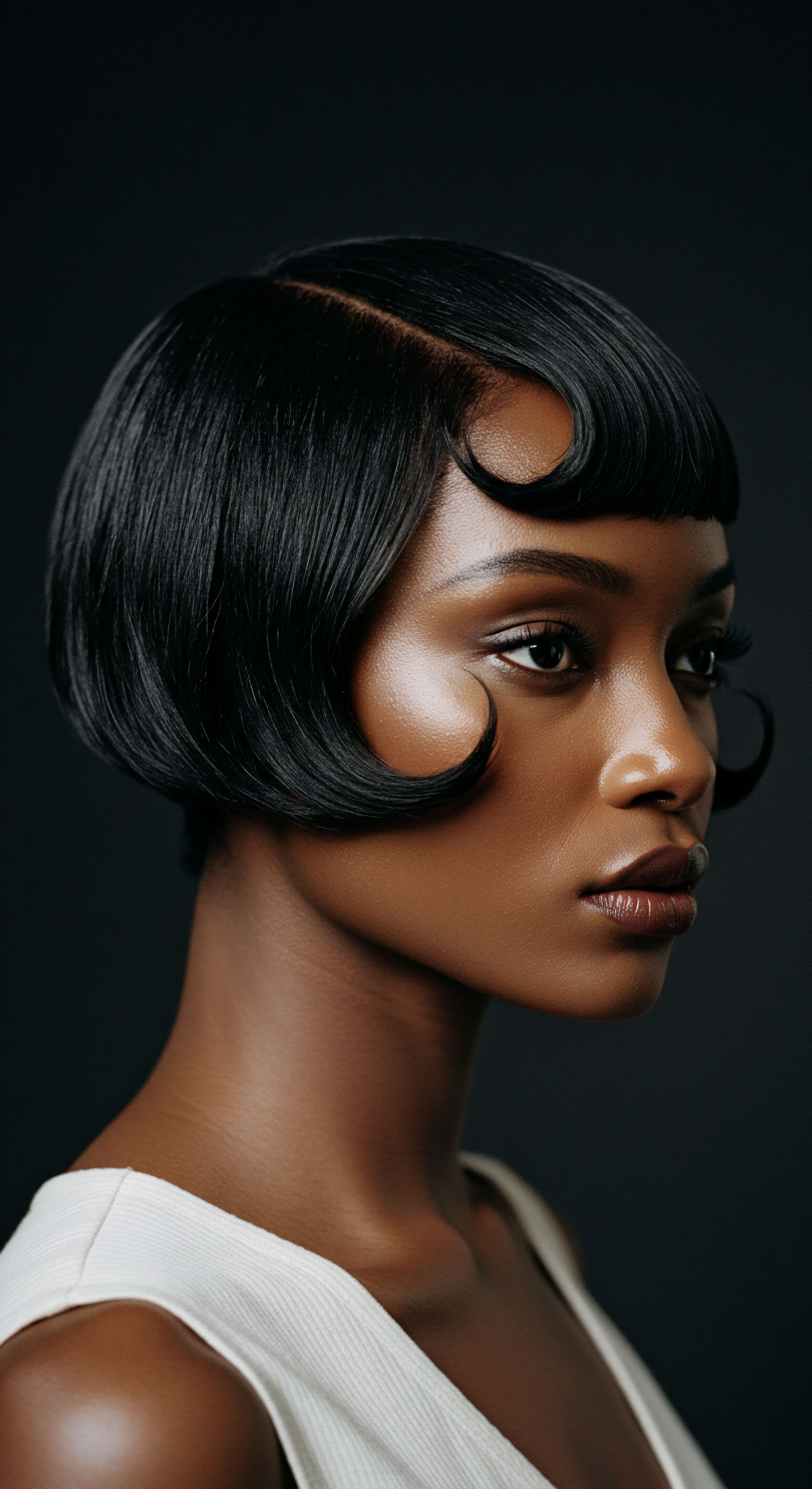
Ancient Echoes of Adornment
Across ancient civilizations, the head often served as a focal point for both practical and symbolic expression. In the Nile Valley, for instance, early forms of head coverings and elaborate wigs were central to social and religious life. While not always “coverings” in the modern sense, the intricate styling and adornment of hair and headpieces in ancient Egypt reveal a deep connection between cranial presentation and identity. Pharaohs, priests, and commoners alike adorned their heads with great care, using materials that ranged from linen and papyrus to gold and precious stones.
These pieces were not merely decorative; they communicated rank, religious affiliation, and even the wearer’s journey through life and death. The use of elaborate headdresses, crowns, and wigs in ceremonies and daily life speaks to a long-standing tradition of investing the head with significant meaning.
Moving beyond the Nile, the ancient kingdoms of Nubia, Kush, and Punt also exhibited sophisticated practices related to head adornment. Their art depicts rulers and deities with distinct crowns and head wraps, often incorporating animal motifs or geometric patterns that held specific cultural or spiritual meaning. These early forms set a precedent for the symbolic weight that hair coverings would carry through millennia, establishing them as vital components of cultural expression and social stratification.
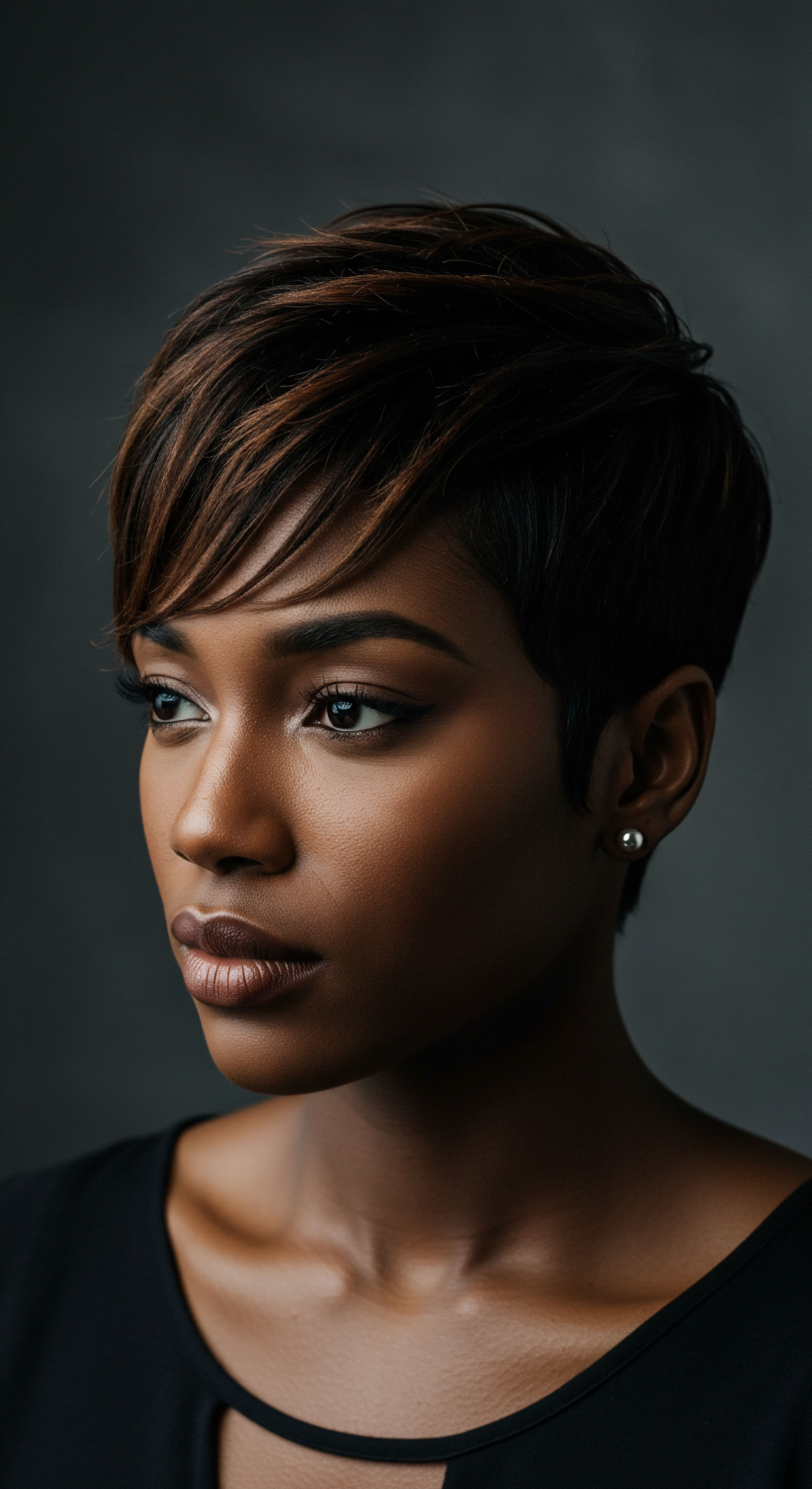
Materials and Their Messages
The selection of materials for hair coverings was rarely arbitrary. Each fiber, dye, or embellishment told a part of the wearer’s story.
- Cotton ❉ Widely cultivated across the continent, cotton served as a foundational material for everyday wraps due to its breathability and versatility. Its accessibility meant it could be dyed and patterned in countless ways, reflecting regional artistic styles.
- Silk ❉ Though less common in indigenous production, silk, often obtained through trade routes, became a material of luxury and status. Its sheen and delicate drape lent themselves to more formal or ceremonial headwear, particularly in West African kingdoms where trade flourished.
- Raffia ❉ From palm trees, raffia offered a sturdy yet pliable fiber, particularly prominent in Central and West African traditions. It was used to create structured headpieces, often braided or coiled, providing both protection and a distinct sculptural quality.
- Beads ❉ Glass, shell, and stone beads, whether locally sourced or traded, were meticulously applied to head coverings, adding weight, color, and symbolic patterns. Beadwork often conveyed tribal affiliation, marital status, or spiritual blessings.
The dyes used were often derived from local plants, minerals, and insects, with colors carrying specific meanings. Indigo, for instance, often symbolized wealth, spiritual depth, or protection in many West African cultures. The patterns themselves, whether woven, embroidered, or printed, were not merely decorative; they were visual lexicons, conveying proverbs, historical events, or social commentary.
A particular geometric pattern might signify wisdom, while a specific animal motif could represent courage or royalty. This rich interplay of material, color, and pattern ensured that each hair covering was a unique statement, a carefully composed message presented to the world.
The foundational role of hair coverings in African societies thus extended beyond simple attire. They were living archives, holding centuries of history, belief, and identity within their folds. Their presence speaks to a deep, abiding respect for the head as a sacred space and for adornment as a powerful medium of cultural communication.

Ritual
Stepping from the ancient echoes of foundational adornment, we now turn to the daily rhythms and ceremonial pulses that shaped the practical application of hair coverings across African cultures. This sphere is not a realm of static artifacts, but a vibrant landscape of lived practices, where the act of covering hair transforms into a gentle ritual, a mindful engagement with self, community, and spirit. It is here that the abstract meanings find tangible expression, where fabric becomes an extension of identity, woven into the very fabric of social interaction and personal rites of passage.
The manner in which hair was covered, the style of the wrap, and the occasion for its wear were all imbued with specific significance. Hair coverings served as powerful visual cues, immediately communicating a wealth of information about the wearer without a single word spoken. This silent language of adornment allowed for a complex interplay of social dynamics, where status, marital availability, age, and even emotional states could be discerned through the subtle artistry of a headwrap.

Silent Communication of Status and Age
Throughout many African societies, a woman’s head covering could instantly signal her social standing. For example, in some West African cultures, particularly among the Yoruba people, the gele—an elaborately tied headwrap—communicates a woman’s status, wealth, and occasion. The height, size, and material of the gele could signify whether she was attending a wedding, a funeral, or a religious ceremony. A younger, unmarried woman might wear a simpler style, while an elder, married woman of high standing might wear a gele of immense proportion and intricate design, reflecting her wisdom and position within the community.
Hair coverings functioned as a non-verbal communication system, conveying status, age, and marital standing through intricate styles and materials.
Similarly, among the Zulu people of Southern Africa, married women traditionally wore specific head coverings, such as the Isicholo, a large, distinctive hat often made of grass and cloth, dyed red or black. This covering indicated her married status and her role as a respected member of the community. Unmarried girls would typically go bareheaded or wear simpler adornments.
These visual distinctions reinforced social hierarchies and provided a clear framework for interaction within the community. The progression from simple youthful styles to more complex, signifying headwear mirrored a woman’s journey through life’s stages, each phase marked by its own unique crown.
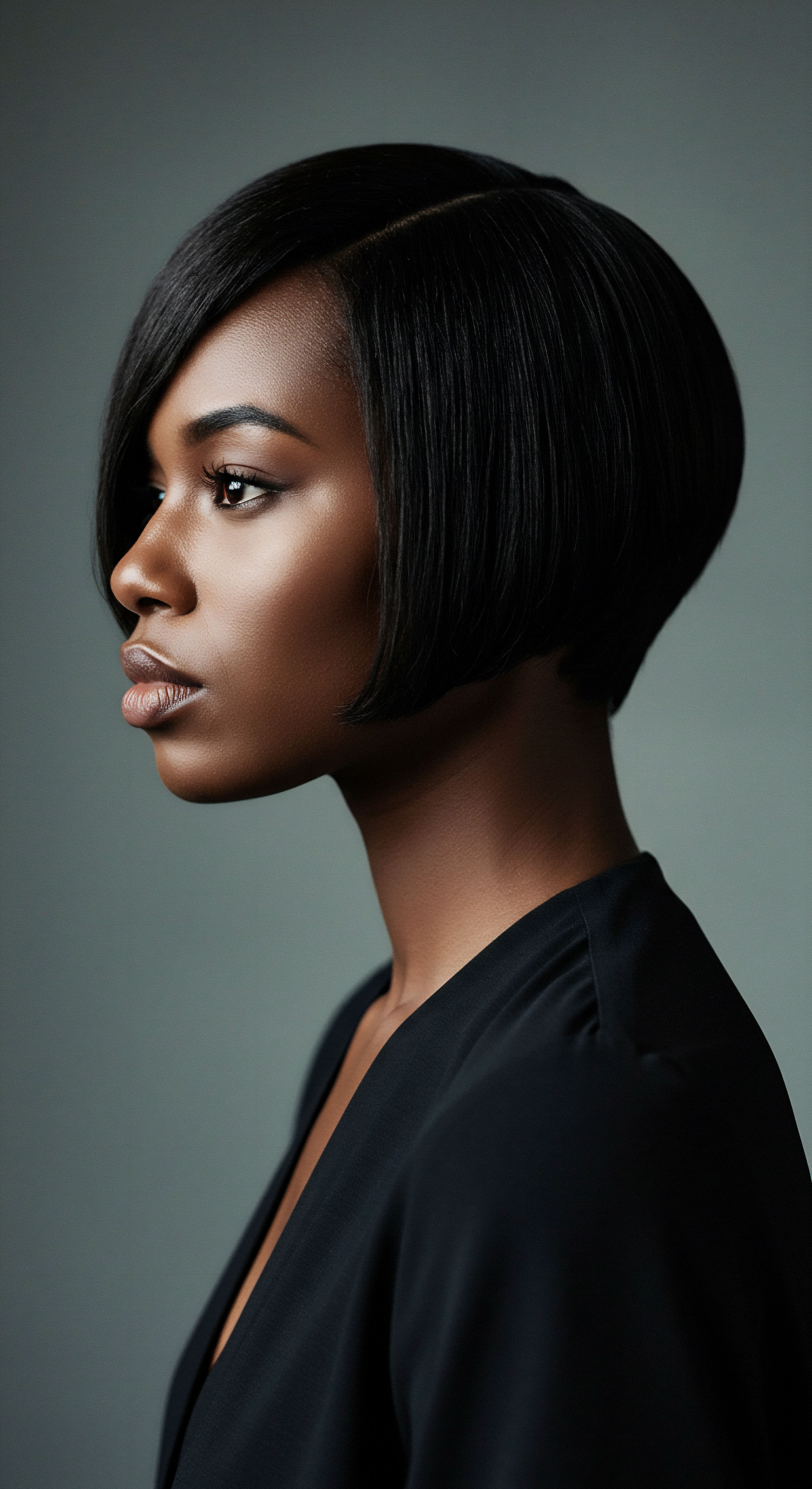
Rites of Passage and Life Transitions
Hair coverings frequently played a central role in rites of passage, marking significant transitions in an individual’s life.
- Initiation ❉ For young people entering adulthood, specific head coverings or styles might be worn during initiation ceremonies, symbolizing their transformation from childhood to maturity and their readiness to assume new responsibilities within the community.
- Marriage ❉ Marriage ceremonies often involved elaborate head coverings for the bride, symbolizing her new identity, her union with a new family, and her future role as a wife and potential mother. These coverings were frequently gifts from the groom’s family, signifying acceptance and blessing.
- Mourning ❉ During periods of mourning, individuals might wear particular types of head coverings, often in subdued colors or simpler styles, to signify their grief and respect for the deceased. These coverings could also serve as a protective measure, shielding the mourner from unwanted attention during a vulnerable time.
These ritualistic uses underscore the profound personal and communal significance of hair coverings. They were not merely external decorations but deeply personal expressions of internal states and societal roles, acting as both a marker and a protective shell during moments of vulnerability and change.

Beyond the Mundane ❉ Spiritual and Protective Functions
Beyond social signaling, hair coverings held considerable spiritual and protective significance. In many traditions, the head is viewed as the seat of a person’s spirit, intellect, and connection to the divine. Covering the head, therefore, was a way to protect this sacred space from negative influences or to concentrate spiritual energy. For instance, in some West African spiritual practices, particular headwraps are donned during ceremonies or rituals to facilitate communication with ancestors or deities, acting as a spiritual antenna or a shield against malevolent forces.
The act of wrapping could also be a form of self-care, a gentle act of grounding. Consider the delicate nature of textured hair, particularly in climates that can be harsh. The covering offered a physical barrier against dust, sun, and cold, protecting the hair and scalp.
This practical protection intertwined with the spiritual, where physical well-being and spiritual integrity were often seen as interconnected. The deliberate act of wrapping, of preparing the hair and head, could become a meditative practice, a moment of quiet reflection before stepping into the world.
| Color/Material White |
| Common Symbolism Purity, peace, spirituality, mourning (in some contexts) |
| Cultural Context Examples Yoruba traditional ceremonies, Xhosa initiation rites |
| Color/Material Red |
| Common Symbolism Life, vitality, passion, danger, power, protection |
| Cultural Context Examples Maasai adornment, Zulu married women's headwear |
| Color/Material Blue |
| Common Symbolism Love, peace, harmony, spirituality, wisdom |
| Cultural Context Examples Tuareg veils, various West African textiles |
| Color/Material Gold/Yellow |
| Common Symbolism Wealth, royalty, prosperity, warmth, sun |
| Cultural Context Examples Akan Kente cloth, various royal regalia |
| Color/Material Indigo |
| Common Symbolism Wealth, spiritual depth, protection, wisdom |
| Cultural Context Examples Fulani indigo-dyed fabrics, Yoruba Adire cloth |
| Color/Material Cowrie Shells |
| Common Symbolism Wealth, fertility, prosperity, spiritual connection |
| Cultural Context Examples Benin Kingdom, various West African societies |
The ritualistic donning of hair coverings extended beyond grand ceremonies into the quiet intimacy of daily life. It was a practice passed down through generations, each tie and fold carrying the echoes of countless hands that performed the same gesture. This continuum of practice underscores the deep-seated significance of these coverings, not as mere accessories, but as living extensions of cultural heritage and personal identity.
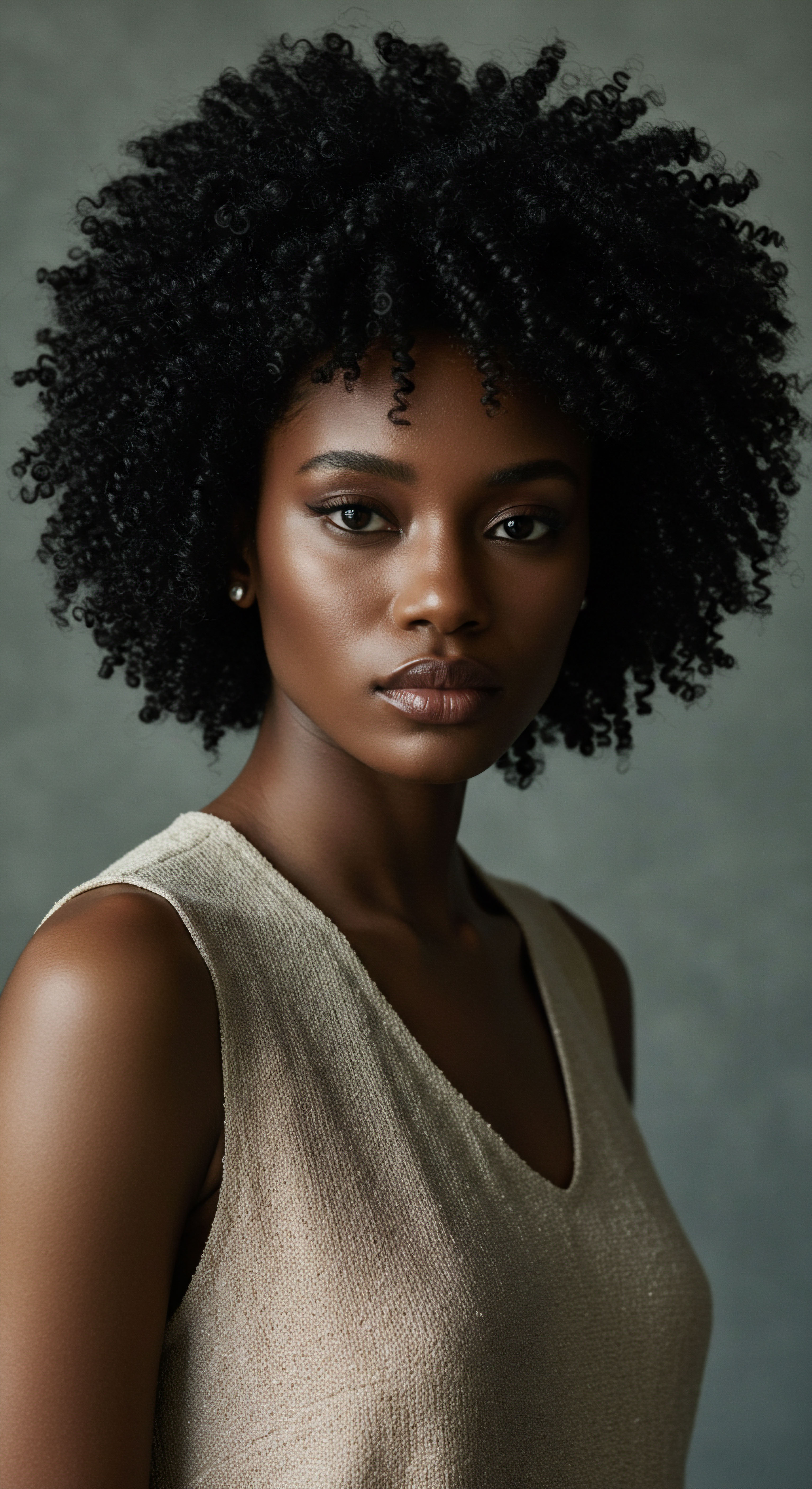
Relay
As we move from the foundational and the ritualistic, our contemplation turns to the enduring legacy and the profound complexities that hair coverings have navigated through centuries of societal change, colonial impact, and ongoing cultural shifts. This is where the story deepens, where the intricate details of historical context meet the resilient spirit of cultural preservation. The simple act of covering one’s hair transforms into a powerful statement, a relay of heritage and identity across time, often confronting forces that sought to diminish or erase such expressions.
The historical trajectory of hair coverings in African cultures is not a linear path but a dynamic interplay of adaptation, resistance, and reinterpretation. During periods of immense external pressure, particularly the transatlantic slave trade and subsequent colonialism, these coverings became silent witnesses and active participants in the struggle for self-definition. They were not merely relics of the past but living symbols, adapting to new realities while holding fast to ancestral meanings.
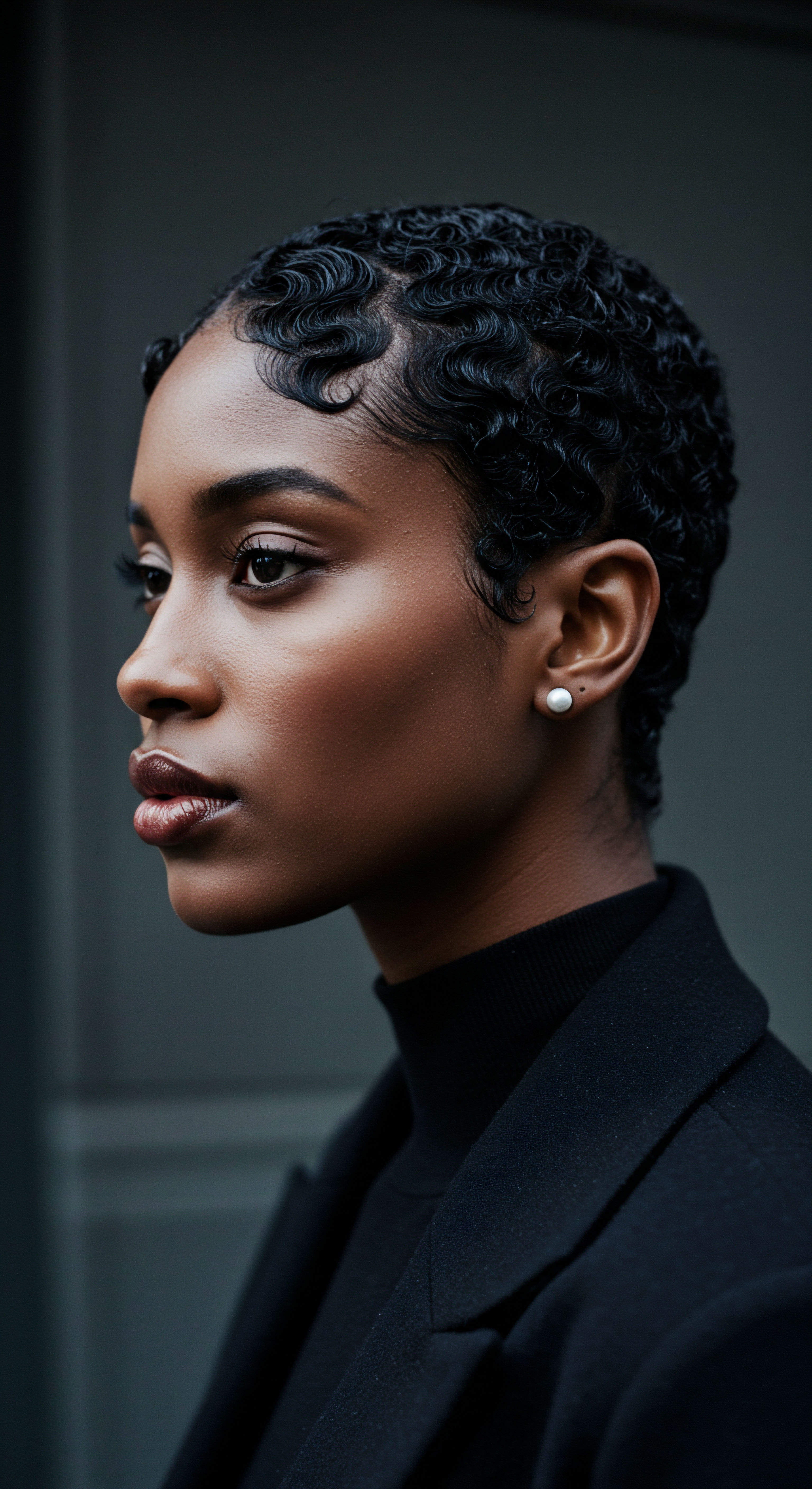
How Did Hair Coverings Become Symbols of Resistance?
During the transatlantic slave trade and the era of colonialism, hair coverings took on a particularly potent meaning as tools of resistance and identity preservation. Enslaved Africans, stripped of their names, languages, and traditional attire, often found solace and defiance in the continued practice of head wrapping, even under oppressive conditions. These wraps became a secret language, a way to maintain cultural continuity and community amidst fragmentation. Specific tying styles could communicate tribal origin, marital status, or even clandestine messages, invisible to the enslavers who often saw them as mere rags or exotic adornments.
In the colonial period, European powers frequently sought to suppress indigenous cultural practices, including traditional attire and hair styling, viewing them as “primitive” or “savage.” In response, hair coverings became overt acts of defiance. Wearing a traditional headwrap in the face of colonial mandates to adopt Western dress was a quiet, yet powerful, assertion of cultural pride and refusal to assimilate. This act of sartorial resistance spoke volumes, affirming identity when all else was challenged.
Hair coverings served as quiet acts of resistance, preserving cultural identity and communicating solidarity during periods of colonial oppression.
A particularly compelling instance of this is documented in a study by Helen Bradley Griebel in her work on the tignon laws in Louisiana. While not strictly an African cultural practice, the tignon laws, enacted in 1786 in Spanish colonial Louisiana, mandated that free women of color wear a tignon (a type of headwrap) to signify their status as “colored” and to prevent them from publicly displaying elaborate hairstyles that might compete with white women’s fashion. This Seemingly Oppressive Law, However, was Subverted by the Very Women It Sought to Control. Instead of being a mark of subjugation, these women transformed the tignon into a statement of style, beauty, and defiance, tying them with such artistry and using such luxurious fabrics that the tignon became a symbol of their resilience and aesthetic prowess, rather than a badge of inferiority.
This example, though outside the geographical scope of continental Africa, perfectly illustrates the dynamic of resistance through sartorial means, a principle echoed in various forms across African societies under colonial rule. It highlights how an imposed symbol can be reclaimed and re-signified, a testament to the enduring power of cultural expression.

Modern Interpretations and Global Reach
In contemporary African societies and the African diaspora, hair coverings continue to evolve, reflecting both a connection to heritage and an engagement with global fashion trends. The traditional headwrap, often called a Duku in parts of Ghana, a Gele in Nigeria, or a Doek in Southern Africa, has transcended its purely traditional functions to become a versatile accessory for self-expression. Young designers and stylists are reinterpreting traditional tying methods, experimenting with new fabrics, patterns, and adornments, bringing ancient forms into conversation with modern aesthetics.
This contemporary revival is also deeply connected to movements of cultural pride and self-acceptance, particularly within the natural hair movement globally. For many, wearing a headwrap is a conscious choice to celebrate their African heritage, to protect their textured hair, or to make a statement about identity and beauty standards. It is a powerful visual affirmation, connecting wearers to a lineage of resilience and creativity.

How Do Hair Coverings Shape Identity Today?
The ongoing presence of hair coverings in African cultures speaks to their deep adaptability and enduring resonance. They serve as a dynamic bridge between the past and the present, a living repository of history, meaning, and aesthetic innovation. From the quiet resistance of enslaved ancestors to the vibrant expressions of modern fashion, the hair covering continues its relay, carrying stories, celebrating identity, and asserting presence. The choice to wear a head covering today can be a deeply personal one, a connection to ancestral practices, a celebration of textured hair, or a declaration of cultural pride.
Consider the impact of media and global communication on the perception and adoption of head coverings. What was once a localized cultural practice has now gained wider recognition, influencing fashion runways and mainstream media. This broader exposure brings both opportunities for celebration and challenges regarding cultural appropriation. The dialogue around who wears what, and with what understanding, becomes a vital part of the ongoing story of these significant adornments.
| Historical Period Pre-Colonial Africa |
| Primary Meanings/Functions Status, spiritual connection, protection, marital status, age, community affiliation |
| Key Characteristics Diverse styles specific to ethnic groups; use of local materials (cotton, raffia, beads); deep symbolic patterns. |
| Historical Period Transatlantic Slave Trade |
| Primary Meanings/Functions Resistance, hidden communication, cultural preservation, defiance against dehumanization |
| Key Characteristics Simplified materials often due to scarcity; creative tying methods to convey subtle messages. |
| Historical Period Colonial Era |
| Primary Meanings/Functions Assertion of cultural identity, quiet defiance against assimilation, symbol of tradition |
| Key Characteristics Continued use despite suppression; adaptation of styles to incorporate new fabrics; often a statement of non-compliance. |
| Historical Period Post-Colonial/Modern Era |
| Primary Meanings/Functions Fashion, cultural pride, self-expression, protection of natural hair, connection to diaspora |
| Key Characteristics Global influence on styles; use of diverse fabrics; resurgence linked to natural hair movement; reinterpretation of traditional forms. |
The ongoing story of hair coverings in African cultures is a testament to the power of human creativity and the persistent desire to communicate identity through adornment. They stand as enduring symbols, connecting generations through shared practices and a deep reverence for heritage.

Reflection
As we draw our contemplation to a close, it becomes clear that the simple act of covering hair in African cultures transcends mere fashion or practicality. It is a profound declaration, a quiet yet powerful affirmation of self, lineage, and spirit. From the earliest whispers of community to the vibrant expressions seen today, these coverings have held space for stories untold, for resilience demonstrated, and for beauty redefined.
They remind us that true understanding often lies not in grand pronouncements, but in the delicate folds of fabric, the purposeful ties, and the deep, abiding respect for what rests beneath. The head covering remains a living testament to a heritage that continues to shape, to inspire, and to connect, carrying its profound legacy forward with grace and quiet strength.

References
- Griebel, Helen Bradley. “The Louisiana Tignon ❉ A Headwrap’s Journey from Suppression to Style.” In The Power of Cloth ❉ The Art of African Textiles, edited by Chris Spring. British Museum Press, 2012.
- Picton, John, and John Mack. African Textiles. British Museum Press, 1989.
- Drewal, Henry John, and Margaret Thompson Drewal. Gelede ❉ Art and Female Power Among the Yoruba. Indiana University Press, 1983.
- Perani, Judith, and Kate Ezra. Cloth, Dress and Art in West Africa. Indiana University Press, 1998.
- Rabine, Leslie W. The Global Circulation of African Fashion. Berg Publishers, 2002.
- Kriger, Colleen E. Cloth in West African History. Rowman & Littlefield Publishers, 2005.
- Thompson, Robert Farris. Flash of the Spirit ❉ African and Afro-American Art and Philosophy. Vintage Books, 1983.
- Gale, Jessica. Fashion and Dress in Revolutionary France ❉ The Art of the Body. Bloomsbury Academic, 2017. (Though not solely African, provides context on sartorial mandates and resistance).